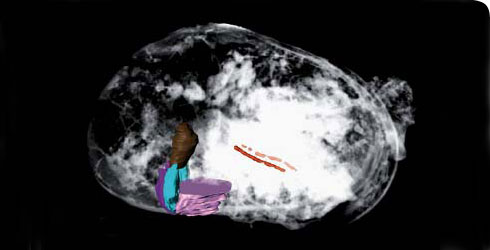You are here:
- Home
- > Nature online
- > Species of the day
- > Evolution
- > Harbinia micropapillosa
- > Biology
Primary navigation
- Species of the day
- Top ten species of the day
- All species
- Malva phoeicea alef
- Hygrocybe psittacina
- Matonia pectinata
- Species name
- Manicina areolata
- Polytperus senegalus
- Species name
- Biodiversity
- Collections
- Scientific advances
- Evolution
- Acherontia atropos (death's-head hawkmoth)
- Adineta ricciae
- Agalma elegans
- Arabidopsis lyrata (northern rock cress)
- Atretochoana eiselti
- Archaeopteryx lithographica
- Azygocypridina lowryi (the 'baked bean')
- Batrachotomus kupferzellensis
- Bradypus tridactylus (pale-throated three-toed sloth)
- Calveriosoma gracile
- Capitulum mitella
- Cauloramphus disjunctus
- Cephalaspis lyelli
- Cercis siliquastrum (Judas tree)
- Cervalces latifrons
- Cheirothrix lewisii
- Clydagnathus cavusformis
- Coelopleurus (Keraiophorus) exquisitus
- Columba livia
- Daidal acanthocercus (proto-mantis shrimp)
- Dimorphodon macronyx
- Euceraphis betulae (silver birch aphid)
- Equisetum myriochaetum
- Gigantoproductus giganteus
- Eucidaris metularia (sea urchin)
- Harbinia micropapillosa
- Hepialus humuli (common ghost moth)
- Hildoceras bifrons
- Hippopotamus madagascariensis (dwarf hippopotamus)
- Homo neanderthalensis
- Icosteus aenigmaticus
- Latimeria chalumnae
- Lottia gigantea (owl limpet)
- Macropoma lewesiensis
- Malacosteus niger (stoplight loosejaw)
- Manicina areolata (rose coral)
- Mantelliceras mantelli
- Melianthus major (honey bush)
- Metacrinus rotundus (Japanese sea lily)
- Milichia patrizii (ant-mugging fly)
- Mimus trifasciatus (Floreana mockingbird)
- Myophorella lusitanica
- Myrsidea nesomimi (mockingbird louse)
- Nannoceratopsis gracilis
- Neocrinus decorus
- Nummulites gizehensis
- Ophthalmosaurus icenicus
- Ornithorhynchus anatinus (platypus)
- Parkinsonia parkinsoni
- Peloneustes philarchus
- Pentacrinites fossilis
- Periphylla periphylla
- Platynereis dumerilii
- Precis octavia (Gaudy commodore)
- Proisocrinus ruberrimus (Moulin Rouge)
- Protopterus annectens
- Rediviva emdeorum (bee)
- Seirocrinus subangularis
- Siphonia koenigi
- Southern tyrant reptile
- Tetraplodon mnioides
- Trama troglodytes (root aphid)
- Turnagra capensis (South Island or Stephens Island piopio)
- Meconema meridionale (southern oak bush-cricket)
- Ginkgo gardneri
- Telmatochromis temporalis
- Homo sapiens
- Rhizophascolonus crowcrofti
- Common species
Biology

Synchroton image of male H. papillosa including coloured representation of sexual organs.
Only the bivalved external shells of ostracods are usually preserved in the fossil record. However, Harbinia micropapillosa is best known because in the Cretaceous of Brazil the internal anatomy is preserved in phosphate.
This internal anatomy suggests that ostracods in the Cretaceous reproduced using giant sperm in the same way that their living relatives do.
Toolbox
- Contact and enquiries
- Accessibility
- Site map
- Website terms of use
- © The Trustees of the Natural History Museum, London
- Information about cookies
- Mobile